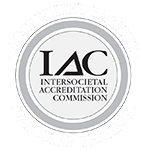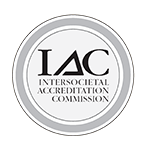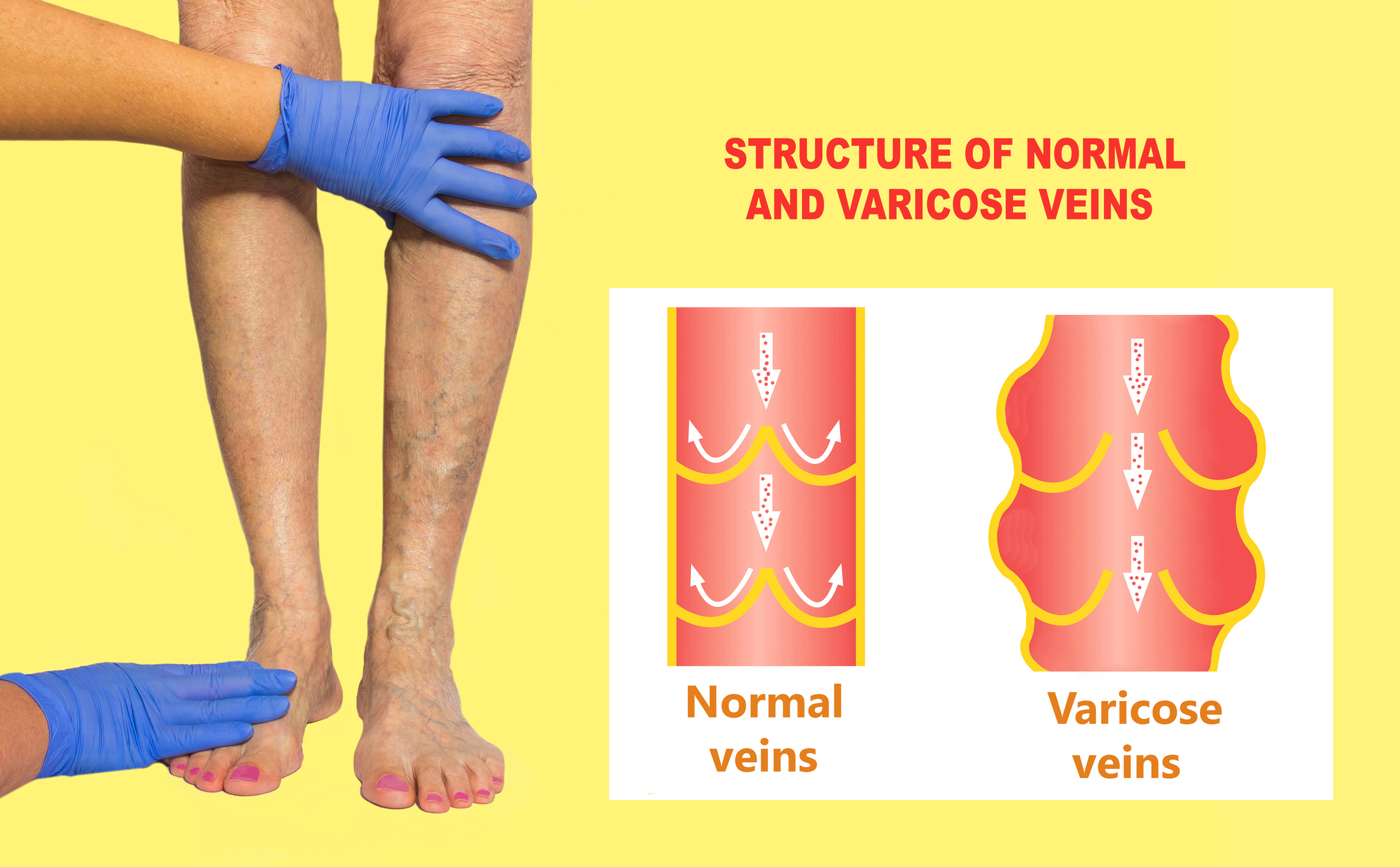
A less frequent yet critical issue with varicose veins is their potential to rupture and cause bleeding. This occurrence is particularly alarming as it can lead to considerable blood loss, especially among individuals on blood thinners for other health conditions. Although deaths due to hemorrhage from ruptured varicose veins are uncommon, they have been documented in medical studies1.
Why Do Veins Rupture and Bleed?
In normal circulation, leg veins have one-way valves that open to allow blood to return to the heart and close to prevent backward flow. Vein disease develops when the valves fail to close. This backward flow, or reflux, stretches the veins, causing them to bulge and become visible on the surface. The result is varicose veins.
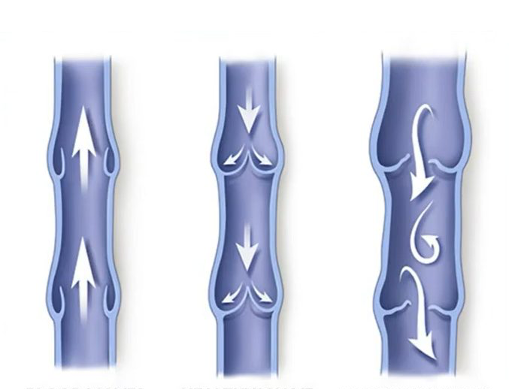
As vein disease progresses, high pressure created by reflux causes more and more veins to dilate, often appearing as blue veins or “spider veins” on the surface around the lower leg and ankle. If the vein is very close to the surface, the slightest injury can cause the vein to rupture and bleed outside of the body.
Common causes of injury include sloughing of dry irritated skin, bumping into a table, bed frame or other sharp object, or shaving with a razor. Many patients experience a bleeding event when they are bathing, as warm water dilates the veins even further. Trauma from a washcloth, towel or razor can disrupt the thin layer of skin on the surface and bleeding can occur.
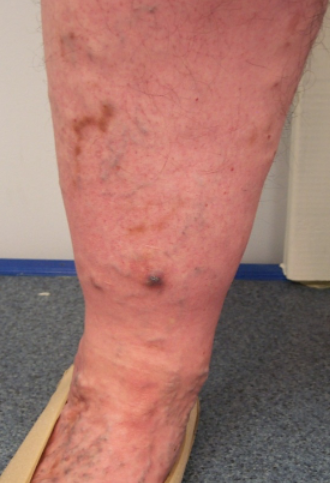 72 year old woman with recent rupture and bleeding.
72 year old woman with recent rupture and bleeding.
What Should You Do If You Have Bleeding from a Varicose Vein?
First, remain calm. Lay down and elevate your leg. This immediately reduces the high pressure in the vein and in many cases will stop the bleeding altogether. You can prop your leg up on the tub, the wall, or a chair.
Next, apply pressure directly over the area if you can reach it. If someone else is home, ask them to apply pressure to the area. Hold pressure for at least 10 minutes. If you cannot control the bleeding on your own, call 911 or ask someone else in your home to call 911. Try not to stand up. Standing and walking will increase bleeding and may cause dizziness or loss of consciousness.
After 10 minutes of continuous direct pressure, if the bleeding has decreased, it's advisable to place a snug dressing over the area to deter further bleeding. The dressing should exert enough pressure to control bleeding without causing discomfort, discoloration, or cooling of the leg. Secure the dressing using tape, a rolled gauze bandage, or an ACE wrap.
Finally, call the Vein Institute and let us know that you need to be seen as soon as possible. Do not remove your dressing until you have been seen by a healthcare provider.
Sometimes patients go to the emergency room when they have an episode of rupture and bleeding. Typically, the ER provider will place a stitch in the area or apply a firm “pressure dressing” and advise you to follow up with a vein specialist the next day for treatment of the bleeding vein.
We see many patients who have experienced rupture and bleeding. Fortunately, there is a safe, effective treatment available to close the bleeding vein to prevent it from re-bleeding. Sclerotherapy closes the vein by injecting medicine into it with a tiny needle. It is virtually painless. After the injection, a compression dressing or stocking is applied. You should keep it in place for the next couple of days.
What Can You Do to Prevent Rupture and Bleeding?
Keep your skin healthy and well moisturized. Prevent dryness and flaking by applying a daily moisturizer made for sensitive skin such as Aveeno, Cerave, or Curel. Moisturizer is best applied immediately after bathing while your skin is still slightly damp. Make sure to apply it to your legs, ankles and feet.
In addition, avoid shaving with a razor over prominent varicose veins or spider veins. And wear support socks or compression stockings during the day or when you are driving long distances or flying.
If you have questions about vein health or topics that you would like to learn more about, feel free to schedule an appointment at any of our 5 locations.
1Manetti AC, Baronti A, Bosetti C, Costantino A, Di Paolo M, Turillazzi E, Maiese A. Bleeding varicose veins' ulcer as a cause of death: a case report and review of the current literature. Clin Ter. 2021 Sep 29;172(5):395-406. doi: 10.7417/CT.2021.2346. PMID: 34625767.




